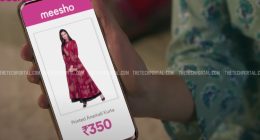We’ve been hearing about changes coming to foreign working conditions via H-1B visa reforms for quite some time. And now, USCIS has issued a new memorandum to keep a closer check on computer programmers coming into the country through H-1B visas. It will maintain a tighter scrutiny and ensure only highly-skilled/professional foreign IT workers are allowed to use these visas to gain entry into the United States.
Under these new policy reforms, technology giants applying for H-1B visas for computer programming positions will have to submit additional evidence to prove the complex or demanding nature of the position. They will have to prove that the position they’re trying to fill with a foreign IT professional actually requires a skilled personnel with professional degrees from outside the States.
The primary objective of introducing the policy reform is listed as under:
The H-1B visa program should help U.S. companies recruit highly-skilled foreign nationals when there is a shortage of qualified workers in the country. Yet, too many American workers who are as qualified, willing, and deserving to work in these fields have been ignored or unfairly disadvantaged.
Analysts are baffled on how this H-1B visa reform would affect the Indian IT economy, but most are just positive and believe that the effect wouldn’t be as deep and excruciating as one would imagine. The move from the U.S government is right on their part as they’re trying to provide for their skilled workers. This means the applications for lower-level IT positions would drop significantly over the coming weeks.
One can argue that the said reform was a necessity as many technology giants are known to outsource computer programming jobs to entry-level programmers in countries like India. This is done to reduce the spending on building a certain product, but it will become difficult in the coming days. According to data from Bloomberg, only 12 percent of the total certified H-1B applicants were computer programmers. But, the shocking fact is that over 41 percent of these were for positions at the lowest wage level.
And as expected, the USCIS (U.S Citizenship and Immigration Services) will now be taking a more targetted approach when visiting the H-1B petitioner and worksite of H-1B employees — to reduce chances of fraud and abuse of the visa program. In a press statement, the organization says that it’ll particularly focus on:
- Cases where USCIS cannot validate the employer’s basic business information through commercially available data.
- H-1B-dependent employers (those who have a high ratio of H-1B workers as compared to U.S. workers, as defined by statute)
- Employers petitioning for H-1B workers who work off-site at another company or organization’s location.
This development comes on the heels of the previous H-1B visa reform, where the government nixed the fast processing service for H-1B applicants for about six months. This process enabled technology giants to employ and sponsor such workers for three to six years to fill in engineering positions. It has also come into effect this fiscal and coupled with today’s memorendum is expected to be highly beneficial for U.S tech giants — and not so much for those who outsource their engineering jobs.
The updated H-1B policies are effective immediately, which means technology companies will have to submit additional info to bring in any new foreign workers in the U.S. It is applicable for the current visa application season which began on Monday for the coming fiscal year 2018. The next fiscal will begin in October 2017 and run until September 2018.





